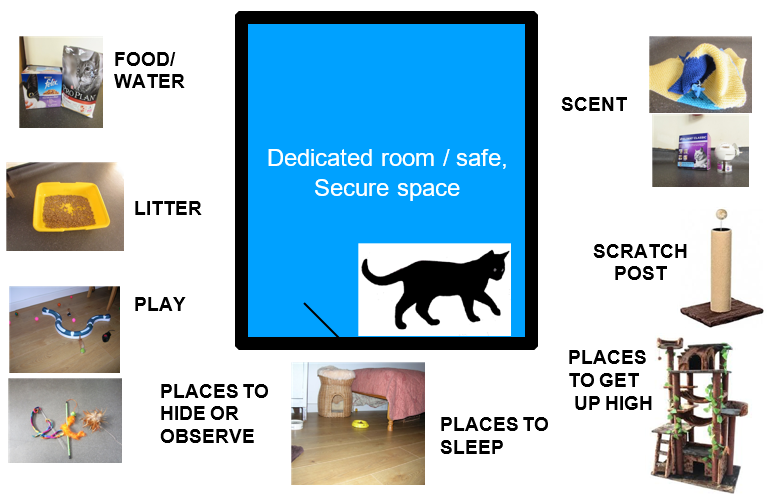Feline Behavior Tips: Nurturing a Happy Cat Home

Feline Behavior Tips: Nurturing a Happy Cat Home
Cats are unique and wonderful companions, each with their own personalities and quirks. Understanding and addressing their behaviors is essential for fostering a harmonious and happy home. In this article, we explore valuable cat behavior advice to help cat owners navigate common feline tendencies.
Understanding Cat Communication: The Language of Meows and Purrs
Cat behavior often revolves around communication, and understanding the language of meows and purrs is key. Cats use different vocalizations to convey their needs, emotions, and desires. Paying attention to the tone and frequency of meows and the context in which they occur helps decode what your cat is trying to communicate, whether it’s hunger, affection, or a request for attention.
Providing Enrichment: Stimulating a Cat’s Mind and Body
Cats are intelligent and curious creatures that need mental and physical stimulation. Enriching their environment with toys, scratching posts, and interactive play not only prevents boredom but also helps maintain a healthy weight and reduces stress. Engaging in daily play sessions, rotating toys, and introducing puzzle feeders are effective ways to keep your cat’s mind and body active.
Respecting Territory and Safe Spaces: Creating a Secure Environment
Cats are territorial animals, and respecting their need for personal space is crucial. Provide safe and quiet retreats where your cat can retreat when feeling overwhelmed or anxious. Understanding their preferred resting spots and creating a secure environment fosters a sense of safety, contributing to overall well-being.
Litter Box Etiquette: Maintaining a Clean and Appealing Space
Litter box issues are common concerns for cat owners, and addressing them requires careful attention. Choose a suitable litter type, keep the box clean, and place it in a quiet and accessible location. Cats are sensitive to cleanliness, and a well-maintained litter box encourages consistent use while minimizing the likelihood of behavioral problems.
Socialization and Introductions: Nurturing Positive Relationships
Introducing a new pet or family member requires careful socialization to ensure a positive relationship. Gradual introductions, positive reinforcement, and allowing cats to approach new situations at their own pace help build trust and prevent anxiety. Whether it’s a new pet, baby, or visitor, gradual introductions contribute to a cat’s comfort and well-being.
Grooming and Handling: Building Trust through Gentle Care
Grooming and handling are essential aspects of cat care that contribute to their well-being. Start grooming routines early, use gentle brushes, and offer treats to associate grooming with positive experiences. Regular handling and grooming not only maintain a cat’s coat and health but also build trust and strengthen the bond between the cat and its owner.
Understanding Cat Body Language: Recognizing Signs of Contentment or Stress
Cats communicate a wealth of information through their body language. Understanding the subtle signs of contentment, stress, or discomfort is essential for responsive care. Relaxed ears, a softly flicking tail, and slow blinking indicate contentment, while flattened ears, an arched back, or rapid tail movements may signal stress. Observing and responding to these cues enhances your ability to meet your cat’s needs.
Scratching Behavior: Providing Appropriate Outlets
Scratching is a natural behavior for cats that serves multiple purposes, including marking territory and maintaining healthy claws. To prevent furniture damage, provide scratching posts and pads in strategic locations. Experiment with different materials and orientations to find what your cat prefers. Offering alternatives redirects this behavior to suitable outlets.
Consistent Routine: Establishing Predictability and Comfort
Cats thrive on routine and predictability. Establish a consistent feeding schedule, playtime, and daily rituals to create a sense of security. Cats appreciate knowing what to expect, and a stable routine minimizes stress and promotes a calm and contented feline household.
Exploring Cat Behavior Advice Further: A Resource for Cat Owners
To delve deeper into cat behavior advice and access additional resources, visit Cat behavior advice. This resource offers valuable insights, tips, and information to empower cat owners in understanding and addressing their feline companions’ behaviors. With the right knowledge and approach, cat owners can nurture a happy and harmonious relationship with their beloved feline friends.

